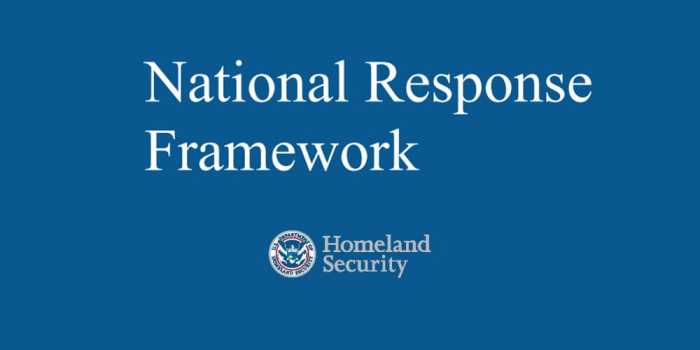Nims is 800 test answers – Dive into the world of NIMS IS-800 test answers and unlock the secrets to effective incident management. Our comprehensive guide provides a clear and engaging overview of this crucial framework, empowering you with the knowledge and skills to excel in your incident response endeavors.
NIMS IS-800, the National Incident Management System Incident Command System, establishes a standardized approach to managing incidents of all sizes and complexities. By understanding its principles and components, you can streamline your response efforts, improve coordination, and enhance overall incident outcomes.
Overview of NIMS IS-800: Nims Is 800 Test Answers

NIMS IS-800 is a comprehensive guide that establishes the National Incident Management System (NIMS). It provides a standardized approach to incident management, enabling effective coordination among various agencies and jurisdictions.
NIMS IS-800 Artikels key principles and concepts, such as:
- Unified command
- Incident action planning
- Multi-agency coordination
- Common terminology
Levels of the Incident Command System (ICS)
ICS defines four levels of incident management:
- Single Resource: Incidents managed by a single agency or resource.
- Multi-Resource: Incidents involving multiple agencies or resources, requiring a more structured approach.
- Unified Command: Incidents requiring a coordinated response from multiple agencies, with a single Incident Commander.
- Area Command: Large-scale incidents requiring a coordinated response from multiple agencies, with multiple Incident Commanders.
Components of NIMS IS-800

NIMS IS-800 consists of four major components that provide a comprehensive framework for incident management:NIMS IS-800 comprises four primary components that work in tandem to provide a cohesive framework for incident management:
Command and Management
Command and Management establishes the incident command system (ICS), a standardized structure for organizing and directing incident response efforts. It defines roles, responsibilities, and lines of authority, ensuring effective decision-making and coordination among multiple agencies and jurisdictions.
Incident Management Using NIMS IS-800

NIMS IS-800 provides a comprehensive framework for managing incidents of all types and sizes. The incident management process Artikeld in NIMS IS-800 consists of six steps:
- Preparation:This step involves developing and maintaining plans and procedures for responding to incidents, training personnel, and conducting exercises.
- Activation:This step occurs when an incident requires a response. The incident commander activates the appropriate response plan and establishes an incident management organization.
- Operations:This step involves taking actions to mitigate the effects of the incident and protect life and property. The incident commander directs and coordinates these actions.
- Demobilization:This step occurs when the incident has been stabilized and the response is no longer needed. The incident commander releases personnel and equipment and terminates the incident management organization.
- Closeout:This step involves documenting the incident and evaluating the response. The incident commander prepares an after-action report and identifies areas for improvement.
- Recovery:This step involves restoring the affected area to its pre-incident condition. The incident commander works with local authorities and community organizations to coordinate recovery efforts.
Roles and Responsibilities of Incident Personnel
NIMS IS-800 defines the roles and responsibilities of incident personnel. The following are some of the key roles:
- Incident Commander:The incident commander has overall responsibility for managing the incident. The incident commander makes decisions, allocates resources, and coordinates the response.
- Public Information Officer:The public information officer is responsible for providing accurate and timely information to the public about the incident. The public information officer also coordinates with the media and other stakeholders.
- Safety Officer:The safety officer is responsible for ensuring the safety of incident personnel and the public. The safety officer identifies hazards, develops safety plans, and monitors the incident for potential safety issues.
- Operations Section Chief:The operations section chief is responsible for managing the tactical operations of the incident. The operations section chief oversees the deployment of resources and coordinates the activities of the various response teams.
- Planning Section Chief:The planning section chief is responsible for developing and maintaining the incident action plan. The planning section chief also coordinates with the operations section chief to ensure that the incident action plan is implemented effectively.
- Logistics Section Chief:The logistics section chief is responsible for providing the incident with the resources it needs, such as food, water, shelter, and equipment. The logistics section chief also coordinates with the finance section chief to ensure that the incident is properly funded.
- Finance Section Chief:The finance section chief is responsible for managing the incident’s finances. The finance section chief tracks expenditures and ensures that the incident is operating within its budget.
Examples of NIMS IS-800 in Action
NIMS IS-800 has been used to manage a wide range of real-world incidents, including:
- The September 11, 2001 terrorist attacks
- The Hurricane Katrina disaster
- The Deepwater Horizon oil spill
- The Boston Marathon bombing
- The COVID-19 pandemic
In each of these incidents, NIMS IS-800 provided a common framework for managing the response. The use of NIMS IS-800 helped to ensure that resources were coordinated effectively and that the response was efficient and effective.
Benefits of Using NIMS IS-800
NIMS IS-800 provides numerous benefits for incident management, enhancing coordination, communication, and overall effectiveness.NIMS IS-800 establishes a common framework and terminology for incident response, facilitating effective communication and coordination among responders from different agencies and jurisdictions. By using standardized procedures and protocols, NIMS IS-800 ensures that all responders are on the same page, reducing confusion and miscommunication.
Improved Coordination, Nims is 800 test answers
NIMS IS-800 promotes collaboration and coordination among responders through its emphasis on the Incident Command System (ICS). ICS provides a structured approach to incident management, defining roles, responsibilities, and communication channels. This structured approach enables responders to work together seamlessly, ensuring a unified and coordinated response.
If you’re looking for a comprehensive resource for NIMS IS 800 test answers, look no further! We have compiled a thorough collection of study materials to help you ace your exam. And for those who are also interested in mastering the HESI test bank med surg, we highly recommend checking out our hesi test bank med surg guide.
With our expert tips and tricks, you’ll be well-prepared to tackle both exams with confidence.
Enhanced Communication
NIMS IS-800 also enhances communication through the use of common operating procedures (COPs). COPs Artikel specific actions and responsibilities for various tasks, ensuring that all responders are aware of their roles and how to communicate effectively. By establishing clear communication protocols, NIMS IS-800 reduces the risk of misunderstandings and ensures that critical information is shared promptly and accurately.
Increased Efficiency and Effectiveness
NIMS IS-800 promotes efficiency and effectiveness by providing a standardized approach to incident management. The use of ICS and COPs streamlines operations, reducing duplication of effort and ensuring that resources are allocated effectively. By standardizing processes and procedures, NIMS IS-800 helps to ensure a more efficient and effective incident response, minimizing downtime and maximizing the use of available resources.
Challenges of Implementing NIMS IS-800
Implementing NIMS IS-800 can present several challenges, including:
-
-*Resistance to change
Organizations may be reluctant to adopt new systems and procedures, especially if they have been using their own methods for a long time.
-*Lack of understanding
Some individuals may not fully understand the benefits of NIMS IS-800 or how to implement it effectively.
-*Cost
Implementing NIMS IS-800 can require significant financial resources, especially for large organizations.
-*Time constraints
Implementing NIMS IS-800 can be a time-consuming process, especially if an organization has a large number of employees or a complex organizational structure.
-*Lack of support
Some organizations may not have the necessary support from leadership or other stakeholders to implement NIMS IS-800 successfully.
Overcoming Challenges
To overcome these challenges, organizations should:
-
-*Develop a clear implementation plan
This plan should Artikel the steps involved in implementing NIMS IS-800, including timelines and responsibilities.
-*Provide training and education
All employees should be trained on the benefits and requirements of NIMS IS-800.
-*Secure funding
Organizations should secure the necessary funding to implement NIMS IS-800.
-*Allocate sufficient time
Organizations should allocate sufficient time to implement NIMS IS-800 and ensure that it is fully integrated into their operations.
-*Build support
Organizations should build support for NIMS IS-800 from leadership and other stakeholders.
Best Practices
Best practices for implementing NIMS IS-800 include:
-
-*Start small
Begin by implementing NIMS IS-800 in a small area or department before expanding it to the entire organization.
-*Use a phased approach
Implement NIMS IS-800 in phases, allowing time for employees to adjust to the new system.
-*Involve stakeholders
Involve stakeholders in the planning and implementation process to ensure buy-in and support.
-*Use technology
Leverage technology to streamline the implementation process and make it more efficient.
-*Continuously evaluate and improve
Regularly evaluate the implementation of NIMS IS-800 and make improvements as needed.
General Inquiries
What is the purpose of NIMS IS-800?
NIMS IS-800 provides a standardized framework for incident management, ensuring a coordinated and effective response to emergencies.
What are the key components of NIMS IS-800?
NIMS IS-800 consists of four major components: Command and Management, Operations, Planning, and Logistics.
How can NIMS IS-800 benefit incident management?
NIMS IS-800 improves coordination, communication, and efficiency in incident response, leading to more effective outcomes.